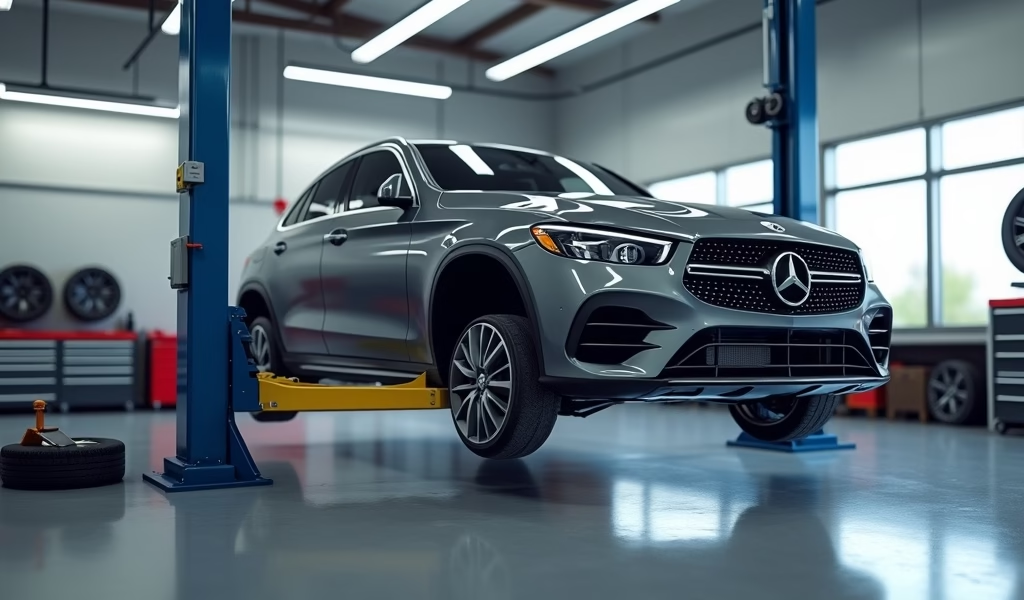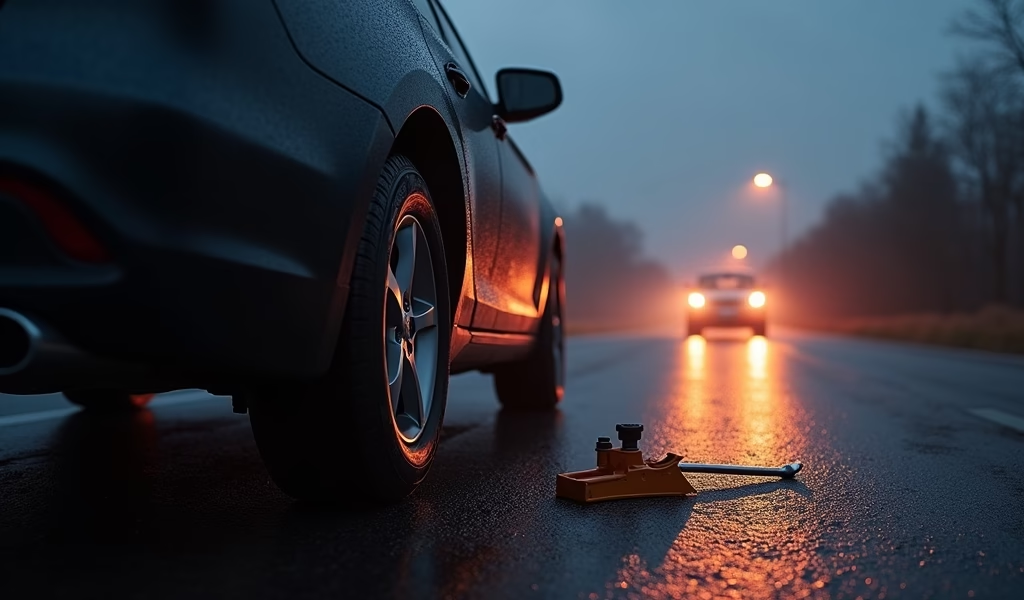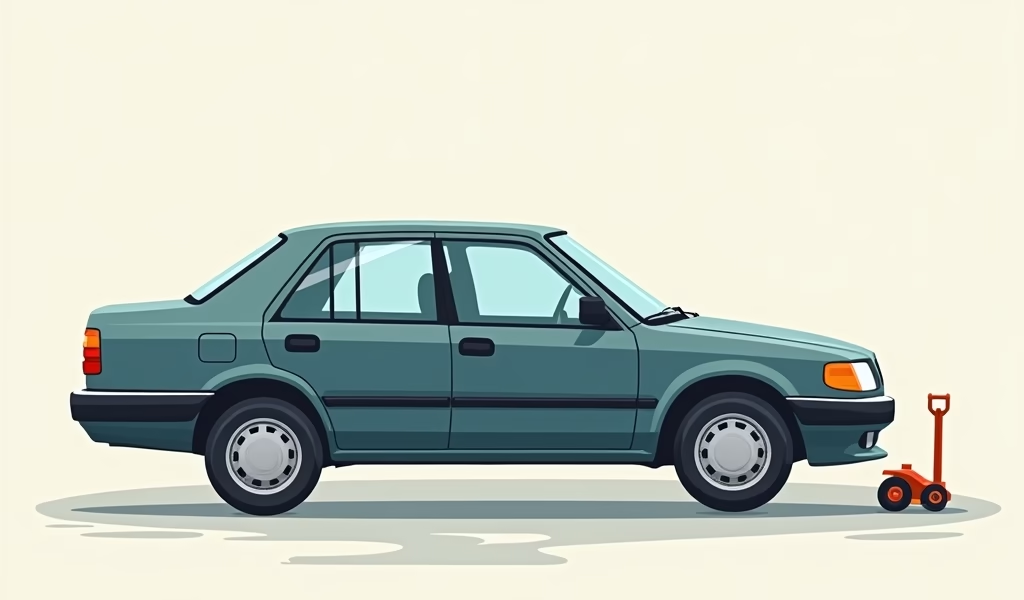Overview
This step-by-step guide teaches drivers how to change a flat tire safely, covering essential preparation, proper techniques, and important safety precautions to follow during the process. The article emphasizes the importance of regular tire maintenance, knowing when to seek professional help, and includes practical advice for preventing future flats while building driver confidence and self-reliance.
Table of Contents
- Preparing for a Flat Tire
- Safety Precautions When Changing a Tire
- Step-by-Step Tire Changing Process
- After the Change
- When to Call for Professional Help
- Preventing Future Flat Tires
- Conclusion
- Frequently Asked Questions
We’ve all been there. You’re driving along when suddenly you hear that distinctive thump-thump-thump sound, and your vehicle pulls to one side. Flat tires happen to even the most cautious drivers, with AAA reporting nearly 4 million drivers experiencing this issue annually. Yet surprisingly, about 60% of American drivers don’t know how to handle this common roadside emergency.
As a professional mechanic with over 15 years of experience, I’ve changed thousands of tires and taught countless drivers how to manage this essential skill. Learning how to change a flat tire step by step isn’t just about self-reliance—it’s about safety and convenience when you need it most.
In this comprehensive guide, I’ll walk you through everything you need to know about changing a flat tire like a pro. Whether you’re a seasoned DIYer or someone who’s never popped a hood, these instructions will give you the confidence to handle this situation calmly and competently.
Preparing for a Flat Tire
The best time to prepare for a flat tire is before it happens. Taking a few simple steps now can save you significant headaches later.
Essential Tools for Your Emergency Kit
Every vehicle should have these tire-changing essentials:
- Properly inflated spare tire
- Jack compatible with your vehicle
- Lug wrench
- Vehicle owner’s manual
- Flashlight with fresh batteries
- Durable gloves
- Wheel wedges or blocks
- Reflective safety vest or triangle
- Rain poncho
- Small 2×6 inch piece of wood (to stabilize the jack on soft surfaces)
I recommend taking five minutes right now to locate these items in your vehicle. Having everything organized and accessible can dramatically reduce your stress when faced with a flat.
Spare Tire Maintenance
Your spare tire needs regular attention just like your regular tires. Check its pressure monthly when you check your other tires. According to Tire Rack’s maintenance experts, spare tires should be replaced every 6-10 years, even if never used, as rubber degrades over time.
Most vehicle manufacturers specify different pressure requirements for spares than regular tires. Temporary spares (often called “donuts”) typically require 60 PSI—significantly higher than your regular tires. Check your owner’s manual or the sidewall of your spare for the correct pressure.
Where to Find Your Tire-Changing Tools
Tool locations vary by vehicle type:
- Sedans and coupes: Usually in the trunk, either under the floor mat or in side compartments
- SUVs and hatchbacks: Often under the cargo floor
- Pickup trucks: Commonly behind or under the seats
- Spare tire location: Under the vehicle, in the trunk, or mounted on the back (for some SUVs)
Safety Precautions When Changing a Tire
When it comes to changing a tire, safety isn’t just important—it’s essential. Taking proper precautions protects both you and other motorists.

Finding a Safe Location
When you first notice signs of a flat tire—steering wheel vibration, vehicle pulling to one side, or that distinctive flapping sound—resist the urge to brake suddenly. Instead:
- Gradually reduce your speed
- Signal and move toward the rightmost lane
- Find a flat, stable surface away from traffic
- Look for a straight stretch of road where approaching drivers can see you from a distance
- Avoid narrow shoulders, curves, and hills when possible
The ideal spot for changing a tire is level ground with a firm surface, adequate distance from traffic, and good visibility. If you can’t find a safe location within a quarter mile, it’s better to drive slowly on your flat (if absolutely necessary) or call for assistance rather than risking your safety.
Setting Up Safety Measures
Once stopped, take these steps to ensure your safety:
- Activate your hazard lights immediately
- Set the parking brake firmly
- Place wheel wedges or blocks on the opposite end of the car from the flat tire (if the flat is on a rear wheel, place blocks in front of the front tires, and vice versa)
- If available, set up reflective triangles about 50 feet behind your vehicle
- Put on your reflective safety vest if you have one
These measures aren’t just formalities—they can literally save your life. According to the National Highway Traffic Safety Administration, hundreds of pedestrians are struck while attending to disabled vehicles each year.
Step-by-Step Tire Changing Process
Now for the main event—actually changing that tire. Follow these steps carefully, and you’ll be back on the road in no time.
Prepare Your Tools and Spare
- Remove your spare tire and tools from their storage locations
- Place them nearby but safely out of traffic
- Remove any hubcap or wheel cover using the flat end of your lug wrench
Loosen the Lug Nuts BEFORE Jacking Up the Car
This critical step is often overlooked, but it’s much easier to break the lug nuts loose while the tire is still on the ground providing resistance.
- Position the wrench on the first lug nut at either 9 o’clock or 3 o’clock position
- Push DOWN on the wrench handle (counterclockwise) using your body weight if necessary
- Only loosen the nuts about ¼ to ½ turn—don’t remove them completely yet
- Repeat for all lug nuts, working in a star pattern
If the lug nuts are extremely tight or rusted, you might need to use the leverage of your foot or even stand on the wrench handle (being careful not to slip). Many drivers struggle with this step, but it’s normal to need significant force.
Position and Raise the Jack
Improper jack placement can damage your vehicle or cause the car to fall. As a mechanic, I’ve seen far too many preventable injuries from improper jacking.
- Locate the designated jack points—these are reinforced areas under your vehicle specifically designed for jacking (check your owner’s manual for their exact location)
- If on soft ground, place your small piece of wood under the jack for stability
- Position the jack securely under the correct point
- Begin pumping or turning the jack mechanism to raise the vehicle
- Lift until the flat tire is about 6 inches off the ground—no higher than necessary
Remove the Flat Tire
- Fully remove the lug nuts, turning counterclockwise
- Place the nuts in a secure container (the hubcap works perfectly) to prevent them from rolling away
- Grip the tire by the tread and pull it straight toward you
- Set the flat tire on its side out of your working area
Install the Spare Tire
- Line up the holes in the spare tire with the wheel studs
- Push the spare all the way onto the wheel hub
- Replace the lug nuts, tightening them by hand initially
- Use a crisscross/star pattern when tightening to ensure even pressure
- Tighten until the nuts are snug, but don’t fully tighten with the wrench yet
Lower the Vehicle and Tighten the Lug Nuts
- Carefully lower the vehicle using the jack until the spare tire touches the ground but still bears little weight
- Tighten the lug nuts with the wrench in a star pattern
- Apply significant force to ensure they’re properly secured
- Completely lower the vehicle and remove the jack
- Give each lug nut a final check for tightness
Many DIYers make the mistake of not tightening lug nuts enough. Use as much force as you can muster—your safety depends on it. When you get home, consider using a torque wrench for precise tightening to your vehicle’s specifications.
After the Change
Your tire is changed, but there are a few more steps to complete before you’re truly good to go.
Proper Storage of the Flat Tire
Store your flat tire where your spare was kept. If it doesn’t fit in the spare tire compartment, secure it in your trunk to prevent movement while driving. Getting the damaged tire repaired promptly should be a priority.
Check Your Spare’s Condition
Before driving away, visually inspect your spare tire. It should be properly inflated and show no signs of damage. If it appears underinflated, drive cautiously to the nearest gas station and add air immediately.
Limitations of Temporary Spares
If you’re using a temporary spare (donut), remember these critical limitations:
- Maximum speed: 50 mph (80 km/h)
- Maximum distance: Generally not more than 70 miles (113 km)
- Avoid sudden acceleration, hard braking, and sharp turns
These aren’t suggestions—they’re safety requirements. Temporary spares aren’t designed for regular driving conditions and can fail catastrophically if pushed beyond their limits. Get your regular tire repaired or replaced as soon as possible.
When to Call for Professional Help
As a mechanic, I believe in self-sufficiency, but I also know when it’s time to call in reinforcements. There are situations where changing your own tire isn’t the safest choice.

Situations Requiring Professional Assistance
Consider calling for help when:
- You’re on a busy highway with limited shoulder space
- You’re in an unsafe or unfamiliar area
- Severe weather conditions make changing a tire dangerous
- You have physical limitations that make the task difficult
- The flat tire resulted from an accident or vehicle damage
- You’re unsure about the proper procedure for your specific vehicle
There’s no shame in calling for assistance when safety is at stake. Even as a professional, there are circumstances where I’d opt for roadside service rather than attempting a tire change in dangerous conditions.
Roadside Assistance Options
Keep these numbers programmed in your phone:
- Your auto insurance provider’s roadside assistance
- Manufacturer’s roadside program (many new cars include this)
- AAA or similar membership services
- Local towing companies with good reputations
I recommend taking a photo of your roadside assistance information and saving it somewhere easily accessible in emergency situations.
When You Don’t Have a Spare
Modern vehicles increasingly come without spare tires to save weight and improve fuel efficiency. Instead, you might have:
- Run-flat tires (can be driven on when flat for a limited distance)
- Tire inflation kits (temporary sealant and compressor systems)
- Mobility kits (similar to inflation kits)
If your vehicle lacks a spare, familiarize yourself with whatever alternative system your vehicle provides. Consider purchasing an aftermarket spare tire kit if you frequently travel in areas with limited roadside assistance.
Preventing Future Flat Tires
While no tire is completely puncture-proof, proper maintenance significantly reduces your risk of flat tires. An ounce of prevention truly is worth a pound of roadside frustration.
Regular Tire Maintenance
Implement these practices to extend tire life and prevent flats:
- Check tire pressure monthly and before long trips (including the spare!)
- Have your tires rotated every 5,000-8,000 miles
- Maintain proper wheel alignment
- Balance tires when you notice vibration
How to Check Tire Pressure and Tread
For pressure checking:
- Test when tires are cold (before driving or at least 3 hours after driving)
- Remove the valve cap
- Press the gauge firmly onto the valve stem
- Compare reading to the recommended PSI in your owner’s manual or driver’s door jamb
For tread checking, use the penny test: Insert a penny with Lincoln’s head upside down into the tread groove. If you can see the top of Lincoln’s head, your tread is too worn and the tire should be replaced.
Warning Signs of Tire Problems
Be alert for these red flags:
- Cracks or bulges in the sidewall
- Excessive or uneven tread wear
- Vibration or thumping while driving
- Tire pressure warning light on your dashboard
- Squealing sounds during turns
Addressing these issues promptly can prevent dangerous blowouts and extend the life of your tires. Don’t ignore subtle changes in how your car handles—they’re often early warning signs of developing tire problems.
Conclusion
Knowing how to change a flat tire step by step is one of those fundamental skills that every driver should master. It’s not just about self-reliance—it’s about safety and confidence on the road. With the right preparation and knowledge, a flat tire becomes a minor inconvenience rather than a major ordeal.
I always tell my customers that practice makes perfect. Try changing your tire in your driveway before you’re forced to learn under pressure. Time yourself to make it fun—with practice, a tire change should take 15-30 minutes.
Remember that safety always comes first. If you’re ever in doubt about your ability to change a tire safely, don’t hesitate to call for professional assistance. Sometimes the smartest DIY decision is knowing when to call in the experts.
With proper maintenance and preparation, you can significantly reduce your chances of experiencing a flat tire. But when the inevitable happens, you’ll now have the knowledge and confidence to handle it like a pro.
Frequently Asked Questions
How long does it take to change a flat tire?
For most people, changing a flat tire takes 15-30 minutes. With practice and proper preparation, you can reduce this time significantly.
Can I drive on a flat tire to reach a safer location?
If absolutely necessary, you can drive very slowly (under 5 mph) for a short distance to reach safety. Driving on a completely flat tire will damage the rim and potentially other components.
How tight should lug nuts be when changing a tire?
Lug nuts should be as tight as you can physically make them using the lug wrench. For proper torque specifications, consult your owner’s manual and consider using a torque wrench when you get home.
How often should I check my spare tire?
Check your spare tire’s pressure monthly along with your regular tires. Spare tires lose pressure over time even when not in use.
Can I use fix-a-flat instead of changing the tire?
Tire sealant products like Fix-a-Flat are designed for temporary emergency use only. They’re suitable for small punctures but not sidewall damage, and the tire should still be professionally inspected as soon as possible.

